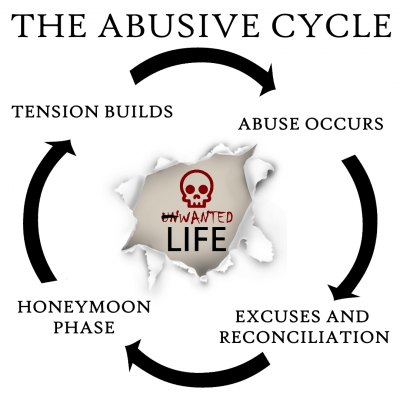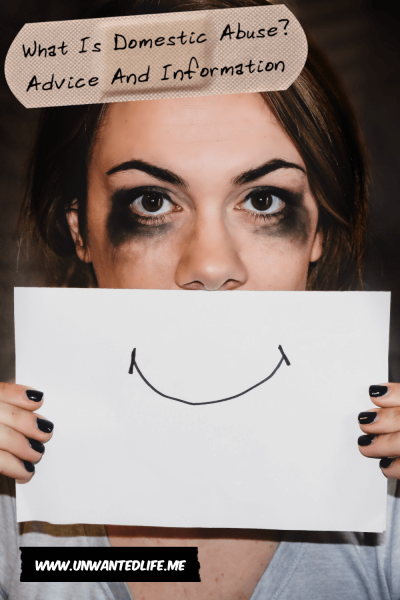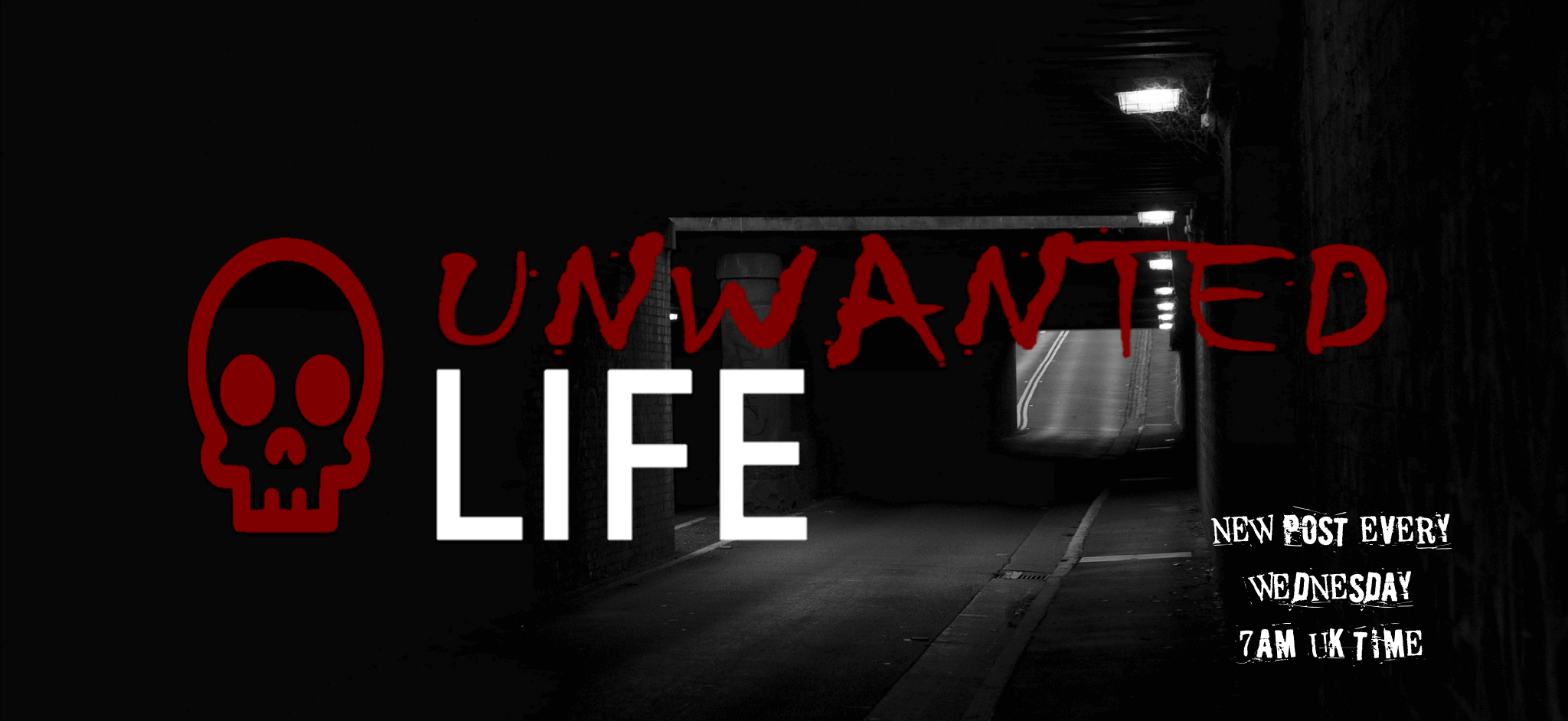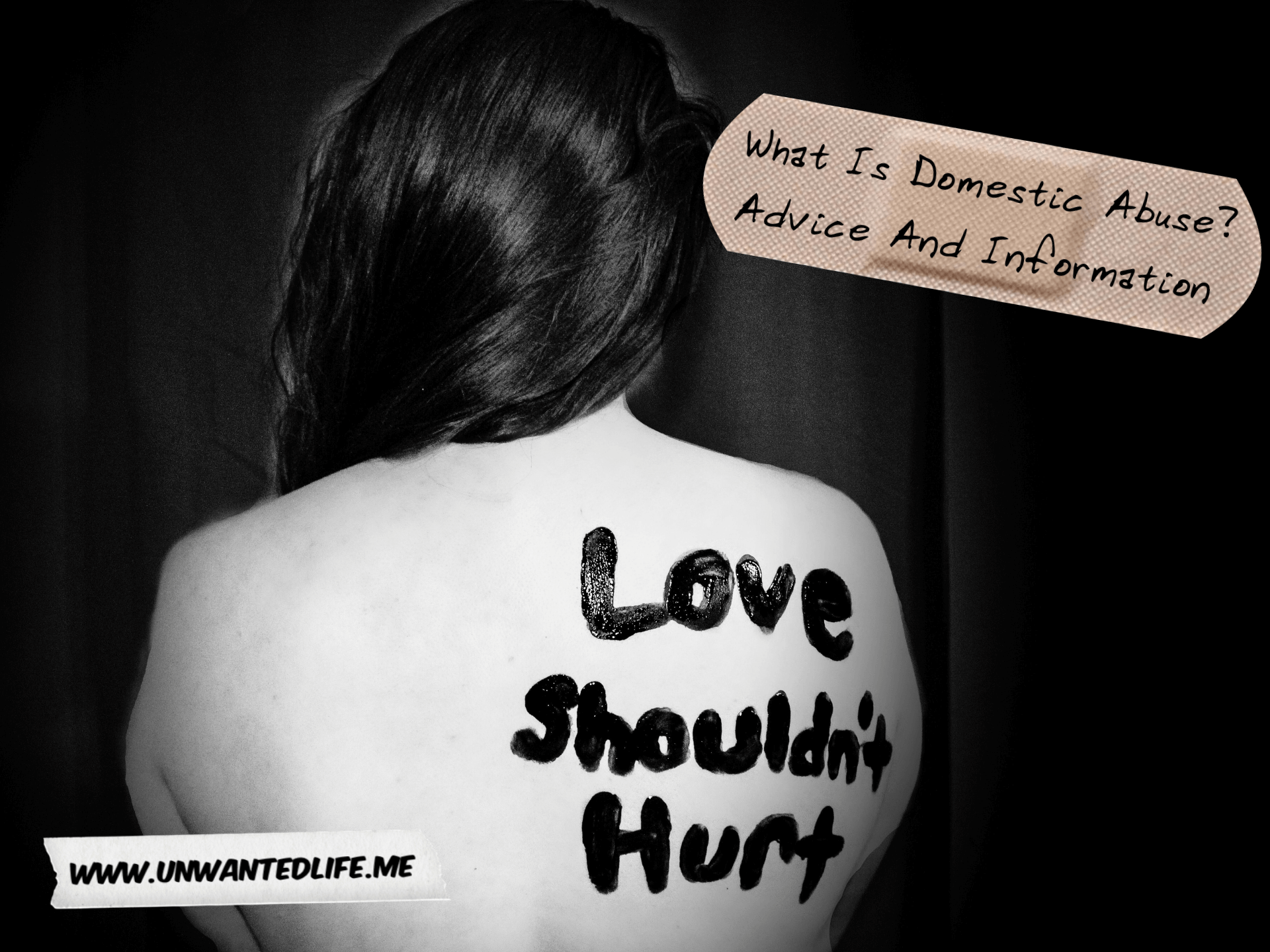After writing 24 Ways To Manage Anger and Abuse: Female Perpetrators, Male Victim, I thought it’d be a good time to describe what domestic abuse is. That’s because people better understand what domestic violence is and don’t realise that the other forms of abuse that domestic abuse covers are actually abuse. Thus, hopefully, this article will help spread awareness so people can know the warning signs and seek help sooner.
Before we get started, let me just say this. Everyone will have to deal with arguments and disagreements from time to time. But the key distinction here between this and domestic abuse is the frequency and if it forms a pattern. Because it’s ok to argue and have disagreements because we’re individuals and have different needs and drives. It’s not ok to force other people to stop caring about their own needs and exclusively putting someone else’s needs above their own.
Domestic abuse can happen to anyone. However, women make up the vast majority of domestic abuse cases, with men being the perpetrators (Women’s Aid).
I’ve been a victim of two different forms of domestic abuse (Female Perpetrators, Male Victim), and I’m a guy. I’ve also known several of my female friends and family to have suffered domestic abuse as well.
No one, no matter their age, race, sexual orientation, gender preference, etc. should be a victim of domestic abuse. We all deserve to feel safe, valued, and respected, especially by those that are meant to love us.
Unfortunately, society has normalised unhealthy behaviours, which is why it can be hard for people to identify abuse when it’s happening.
An estimated 7.5% of women (1.2 million) and 4.3% of men (713,000) experienced domestic abuse in the last year - Office for National Statistics Click To Tweet
The worst part about domestic abuse is how it can escalate to murder. What starts out as threats can soon escalate to violence, and in some cases, end up with the target of abuse being killed.

Source: BBC
Furthermore, according to Safe Lives, 100,000 people in the UK each year are at imminent risk of being killed or badly harmed as a direct result of domestic abuse.
This is what makes domestic abuse an important societal problem that needs to be addressed.
What Is Domestic Abuse?
According to the Crown Prosecution Service (CPS), domestic abuse is defined by the Government as any incident of controlling, coercive/threatening behaviour, violence, or abuse between those aged 16+ or those who could be classed as an intimate partner or are family members.
Essentially, domestic abuse is the combination of two forms of abuse: control and coercion. The UK government (Gov.uk) has defined both of these as the following:
- Coercive abuse
Act(s) of violence, threats, humiliation, intimidation, or other abuse that is used to harm, punish, or frighten their victim into doing the perpetrator’s bidding.
- Controlling abuse
Act(s) aimed to make the target subordinate/dependent on the abuser by trying to control every aspect of the target’s life. They do this by removing their ability to function independently, through isolation from friends, family, support, and resources. They will also try to dictate their everyday behaviour.
These two forms can be implemented by engaging in the following 6 different forms of abuse:
- Psychological.
- Physical.
- Sexual.
- Financial.
- Emotional.
- Cultural/Identity.
1. Psychological
This form of abuse is characterised by trying to affect and distort another person’s sense of reality (Gov.uk). Nowadays, this is often referred to as gaslighting. The aim is for the abuser to create doubt in their target, to make them think they’re incompetent. They can do this by making the victim question their own memory. Or they can constantly deny something to the point that even though you are in fact right, you start to doubt that you are.
Use of threats can also be used to psychologically abuse their target so that they live in fear that their abuser might act upon the threats they’ve made.
2. Physical
To physically harm the target, such as pushing or hitting the target. However, it can also be that the abuser is breaking stuff around the target, punching a wall, and throwing stuff to show physical dominance.
3. Sexual
This form of abuse involves sexual behaviour or a sexual act forced upon the target without the consent of the said target, or with consent given under duress. For example, saying they’ll rape you or hurt your kids if you don’t sleep with them.
However, abuse of this sort is not restricted to just rape and covers all forms of sexual assault. For example, they might touch you in a way you don’t want to be touched.
4. Financial
In a nutshell, this form of abuse is where the abuser takes control of the target’s finances. This can be done by stopping the target from working; making the target take out loans in their own name, on behalf of the abuser; and making the target give the abuser all their money, wages, and bank/credit cards (Citizens Advice).
5. Emotional
This form of abuse is designed to attack the target’s sense of self-worth and undermine your self-esteem. This is largely done through the use of manipulation. The aim is to make the target feel like no one else will want you besides your abuser (Help Guide).
Emotional abuse can take the form of derogatory pet names; name-calling; yelling; shaming; blaming; patronizing; insults; belittling you and your achievements; and dismissing you.
6. Cultural/Identity
This is when abusers use aspects of a victim’s cultural identity to abuse their target. Such as not allowing the target to observe their dietary or dress customs of their faith, using their race against them, or threatening to ‘out’ someone as LGBTQ+.
Recognising Domestic Abuse
Even though every domestic abuse situation is different, there are common factors that you can be on the lookout for to identify domestic abuse. Also, it should be noted that domestic abuse can also take the form of online and digital abuse (Women’s Aid).
- They tell you what you can wear.
- They tell you what you can eat and how much.
- They stop you from seeing family and friends.
- They shout at you.
- They mock you.
- They call you names.
- They threaten you.
- They threaten to withhold money.
- They threaten to take away or destroy your positions, such as your phone or laptop.
- They threaten to harm themselves or kill themselves in order to control you.
- They steal from you.
- They have other relationships.
- They lie to you.
- They withhold information from you.
- They act jealously.
- They constantly check on where you are and what you’re doing.
- They force or coerce you into sexual acts that you don’t want to engage in.
- They hit you.
- They throw stuff and break stuff in front of you when they’re angry or to intimidate you.
- They blame you for the abuse.
- They deny the abuse happened.
- They tell you it’ll never happen again.
- They claim they can’t control their anger.
Cycle of Abuse
Domestic abuse can become a pattern of abusive events, taking the form of controlling, coercive, threatening, degrading, violent behaviour, and sexual violence (Women’s Aid). In other words, a cycle of abuse.
This is supported by the CPS, who states that domestic abuse is rarely a one-off. Instead, the abuse will build up and get more frequent over time. The abuse used will also take many different forms over this time too.
They’ll tell you it’ll never happen again. They’ll try to make amends and tell you they love you. But this is all part of the abusive cycle. They do this because it makes the target of the abuse minimise the original abusive behaviour.

An abuser will act upon their desire to abuse their target, but they’ll soon follow that up with excuses and apologies. They do this in order to keep you in an abusive relationship. Then comes the honeymoon phase, where the abuser will act all nice, give you gifts, and everything will seem fine. However, this won’t last forever and the build-up to the next abusive event will start to begin. The result of which will take you back to the start of the abusive cycle. This will keep repeating itself until the target of abuse is out of the situation.
Am I In A Domestic Abusive Relationship?
If any of the abusive signs (although not a full list) resonate with you, then maybe you should fill in Women’s Aid’s online form. You can do this by clicking here.
You should take the test even if you don’t really think any of the signs listed here are something you’ve experienced, but the relationship is causing you to feel hopeless and/or feel desperate. I know in one of my relationships I feared going home because my abuser would be at home drunk (Female Perpetrators, Male Victim). So if you feel something like that, or you feel you have to walk on eggshells around someone, then fill in the quick online form.
Sometimes we can’t see the wood for the trees. Thus, a quick form like this might open our eyes to what we felt deep down was really going on.

Are You Worried About Someone (Or Yourself)?
Due to the prevalence of domestic abuse, the chances are you know someone who is being targeted by an abuser or has been targeted. The very nature of this kind of abuse, and the fact it happens behind closed doors, means you likely won’t even be aware of it happening. Which makes helping someone experiencing domestic abuse extremely difficult.
That’s why educating people about domestic abuse is important, and why I decided to write this post. Some people might be open about their situation, and thus, there are a few steps you could take to try and assist them.
Be patient
Domestic abuse is a complex and difficult situation, not just for the person experiencing it, but also for you if you’re wanting to support the person. As such, you need to be patient not just with the other person, but with yourself as well.
Furthermore, leaving an abusive relationship takes a lot of strength. Leaving the situation might also be beset by a lot of problems that need resolving first. For example, if they don’t have access to any finances or have a place they can go to.
Be direct
Due to the nature of domestic abuse, those who are being abused might not realise they are or may no longer see it as abuse. Thus, you may have to be direct in order to get the conversation going, or simply to get the person to start realising they’re being abused. You could say something like, “I’m worried about you because…” or “I’m concerned for your safety…”
Listen
Listen to what they have to say, reassure them that they’re not alone, and make sure they know that they’re not to blame for the abuse they’ve been suffering.

Reassure
Remind them that no one deserves to be abused, no matter what their abuser may claim. Acknowledge their strength for talking to you about the abuse they’re suffering.
Believe
If someone tells you about the abuse they’re suffering, believe them. As I’ve previously stated, often the only person who’s aware of the abuser’s dark side is the person being targeted by the abuse. So make sure you tell the person that you believe them so you can better support them in this situation.
The law
Help them to seek legal help, such as reporting the abuse to the police or going to a solicitor. You can also apply for a civil injunction or protection order.
Encourage
Encourage them to maintain their outside relationships, but also encourage them to reach out to domestic abuse organisations. Encourage, but don’t be forceful about it.
Information
Provide information to them about organisations they could contact, or other such information that might help them in their situation (for example, details of a solicitor or estate agent).
Privacy
Allow the person to use your address to have letters sent to them so their abuser can’t get to them. You could also allow them to make calls and use emails at your place, to also help them keep information from their abuser.
Safety plan
- Identify safe areas in the house or other places they can go to.
- Learn the red flags of the abuser so you can avoid setting them off.
- You can also create a code word that you can say, text, etc. when you need to let others know you’re in danger.
Escape plan
- Practice how you could escape should the need arise.
- Prepare a plan for if you need to leave at a moment’s notice (for example, having an emergency bag with clothes and toiletries ready and hidden somewhere).
- Create a list of emergency contacts and try to memorise them.
Don’t
Don’t tell them to leave the situation if they’re not ready, because it’ll take a lot of strength to leave their abuser and to stay away from them. If they’re not ready, then this could affect the supportive relationship that’s built up between the two of you. It can also cause the person to slip further into hopelessness, as well as make the abuse worse if the attempt to leave fails and the abuser finds out.
The most dangerous time for someone suffering at the hands of an abuser is when they try to leave Click To Tweet
Don’t criticise them for remaining in the situation either, because that’ll further isolate the person. Instead, keep offering them support, help them to gain confidence, and help them regain their self-esteem. Doing that will help them get ready to leave their abuser.
Don’t judge.
Self-care
Come up with some self-care ideas in order to help them cope with the situation. But remember, you also need to look after yourself in this situation.
Supporting someone through domestic abuse is extremely emotionally and psychologically draining. I learnt that the hard way (Female Perpetrators, Male Victim).
After You’ve Left
A few tips that’ll help you after you’ve left your abuser.
- Change all your bank accounts and credit cards to new providers.
- Change your numbers to new and unlisted ones.
- Create new social media profiles and make them private (or at the very least, make all your current social media accounts private). Also, be sure not to share any information that might help your abuser find you on your social media accounts.
- Change your routines.
- Factory reset your phone, tablet, laptop, etc. in case your abuser has hidden tracking apps on them.
Domestic Abusive Behaviour Is A Choice
This might seem counter-intuitive, but domestic abuse isn’t a result of the abuser losing control. Domestic abuse is a deliberate act. An abuser will wait until they think they’re in a situation where they can abuse you without anyone else catching them. If the abuser actually abused their target because they lost control, then they would also lash out randomly at other people who cause them to “lose control”, but they don’t. They have their target of abuse and they’ll save that abuse for that target.
As always, leave your feedback in the comments section below. Also, feel free to share your experiences of domestic abuse and advice on how to help those who find themselves in such a situation in the comments section below as well. If you want to stay up-to-date with my blog, then sign up for my newsletter below. Alternatively, get push notifications for new articles by clicking the red bell icon in the bottom right corner.
Lastly, if you’d like to support my blog, then you can make a donation of any size below as well. Until next time, Unwanted Life readers.
Domestic Abuse Support
National Domestic Violence Helpline
Live Free Fear – Wales
Action on Elder Abuse
Ending Violence Association of Canada
National Domestic Violence Hotline – USA


Superb post! I work in safeguarding so this is something I see almost daily and the impact it has.
We really need to be aware of this. Thank you so much for sharing x
Thank. It is an important area to inform others about
Great informative posts. My advice to anyone experiencing any kind of abuse would be to seek help and know that you are never alone. Although you may feel like it, you are not. There are many of us out here praying for your safety.
Well said
Really important to raise such awareness and the different ways domestic abuse can happen. In the abusive relationship I was in emotional abuse and financial abuse started first before the physical abuse did. Maybe if I was more clued up on the others I may of gotten out before I did. Really glad you are sharing such information and covering it both ways with the amount of Male domestic violence victims raising too.
Great work, Helen 🙂
I’m sorry you found yourself in such a situation, domestic abuse is far more common than people realise
This post is so valuable. Thank you so much for writing it.
Jas xx
Informing people is the first step to reaching out and giving others a hand in knowing they can end the cycle. When a person knows they are not alone, they are more likely to act. Community is a beautiful thing!
Very well said ?
very very well done for talking about Abuse ..i was sexually abused as a child .my story of abuse is in a Authors book
people never see the every day effects .there views/judgements are very Snotty Nosed .i have M.E . BECAUSE i was abused
long list health issues ..migraines ..ibs list goes on .i take part in a lot lot research . ABUSE AND RESEARCH ARE VERY RARE ..YET SO EFFECTING
my blog.http;//mark-kent.webs.com
twitter,supersnopper
I’m sorry to hear about what happened to you
same here .sorry to hear what happened too you .YOU ARE ALIVE …I AM ALIVE
mark
This is such an amazing post my darling and knowing all the warnings & this could help so many people who could be in that situation or have loved ones in that situation right now.
Love, Amie ❤
The Curvaceous Vegan
That’s what I’m hoping ?
Another wonderfully written and informative post. I think the things I’ll take away from here is how to offer support by giving a safe place and agreeing a code word, for conversations and texts. Thank you for writing this, it’s not an easy subject to tackle, I’m sure.
I’m glad you found some useful advice to take away from it
An important topic that indeed needs much more dialogue. Such a well written piece with great information. I especially like that you mentioned what victims can do in regard to self care once they’ve left.
Thanks, hopefully the post will help someone in need
Powerful article. The more people that speak about it and open up about their experiences, the easier it becomes for others. Thank you for this, and thank you for posting links to help.
Jazmin
http://www.jazminsauca.com
Thank you for taking the time to read and comment on it
This is so detailed and factual! A lot of people think abuse is just being hit or overtly sexually assaulted when the abuse brings subtle and insidious first, and the victim doesn’t even realise the scale of the abuse until they’ve left. I had suspicions that I might have been in something abusive, but it only fully sank in until I was at an abuse talk and they described it perfectly. I asked so many questions “for a friend”, and every answer was “yes, that’s abuse” leavingis the most dangerous time, the aftermath was worse than during
Ash | https://thisdreamsalive.com
I’m sorry to hear you’ve been through that situation yourself. It’s a big issue that not enough people know the true scope of what is classed as domestic abuse
This is a great article. In-the-moment it’s so easy to explain away that it isn’t happening. This article does a great job explaining what all encompasses abuse and more! Thanks for putting this out there!
Thanks for reading
Domestic abuse is a serious issue and action needs to be taken upon it immediately if we see it happening. There are so many different types of abuse in a relationship that can happen. It goes way beyond just physical. Relationships has its ups and downs but at the end of the day, if there is a recurring negative behavior, it shouldn’t be tolerated. Thank you for sharing all of this valuable information.
Nancy ♥
Thanks for reading
Truly eye opening. Such wonderful work and information. I hope this reaches to people who need it the most.
I hope it does too
You know… I went to therapy this year and of course we talked about the family situation. And I was appalled to hear the word abuse used in context to what I went through.I didn’t know. I was a child. This was my normal. But it does explain why I left the first opportunity that I got and why I still refuse to go back there. Psychological and emotional abuse changed me in ways that I didn’t know. This is how I have come to understand my anxiety. years of conditioning. Expecting the mind games, doubting myself and just not knowing how to function. Any form of abuse is not accpetable. No should have to go through these things. And it pains me to know that so many people do.
I’m sorry to hear what happened to you. I wish it was easier to make sure no child and no person ever experienced such abuse
Such an important topic to discuss and bring awareness too! Such an informative post. There are so many forms. Thank you for sharing your post x
Thank you for reading it
Such a good post…I think people don’t realize just how common domestic abuse it. I would dare to say that it’s much higher than what is being reported by government agencies and that lots of people keep it a secret not only from agencies, but from their friends and family. I also like how you make abusers accountable for their actions. It’s NOT an accident. These kinds of people know who they can mess with and who they can’t.
The more people realise that abusers are deliberately targeting them, the sooner they should realise something’s wrong in a relationship
Exactly, and flee to safety as well. I have been on the outside of many friends’ relationships where there was abuse is going on and got very frustrated that they could not see the reality of how they were being taken advantage of.
I’ve been shocked at finding out about friends and family that have been in an abusive relationship and no one else was aware at the time. My pervious post was about my own personal experiences with domestic abuse, which have made me far more aware of the warning signs now
This is such an incredibly important post. You’ve raised awareness so well and given people great advice on how to help. <3
Soph – https://girlvsworldblog.com x
Thank you
You are so brave for writing this and seeking to help others after what you have been through. It’s truly a difficult thing to go through. Congrats for coming out of the other end, many never do!
Xoxo
Thanks ?
Your WordPress account seem to be linked to a deleted blog, so I can’t visit yours
Excellent post and so detailed. This is such an important topic and it breaks my heart to see that 2018 jump on the graph! I really appreciate that you went into detail explaining the different kinds of abuse. So many people don’t see it if they’re not being physically hurt. It’s important for everyone to be aware of the other ways too x
Sophie
Thank you ?
Thank you for this important post!
In my country statistic of domestic abuse is so much higher around 40%. That what I’ve heard on TV. It’s awful. I was happening in my family and it was hard to see when I was a child.
40% of women or the general population have suffered domestic abuse? That is shockingly high
Super post! I’m so sorry you had to deal with such a sh*tty situation, but I’m glad you’re doing better now. It’s important to keep talking about these issues everywhere. Many people normalize these behaviors. It’s key people understand what’s ok and what’s not.
The best way to help inform and educate people is to talk about it openly
What a GREAT article! I was involved in an abusive relationship as a teenager (physical , mental, etc), then mentally and verbally as an adult! You my friend , hit on every aspect in this article! Great job
I’m sorry that you went through that, its5 far too common a problem
Good information sharing domestic abuse. Domestic abuse is a no no no……..It should not happen to anyone.
Indeed it shouldn’t